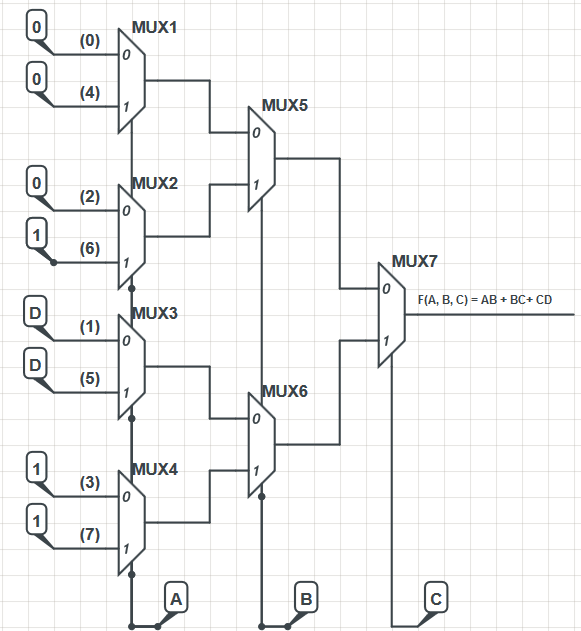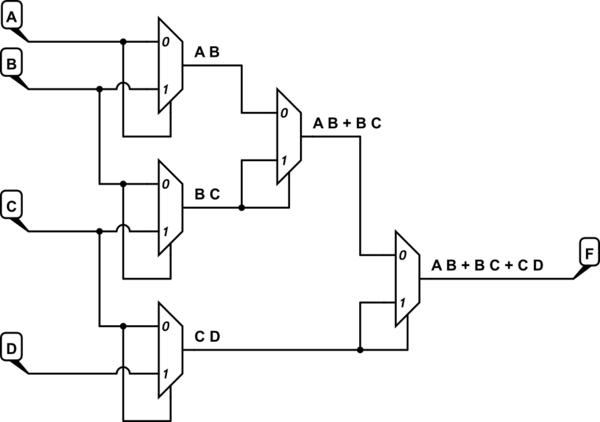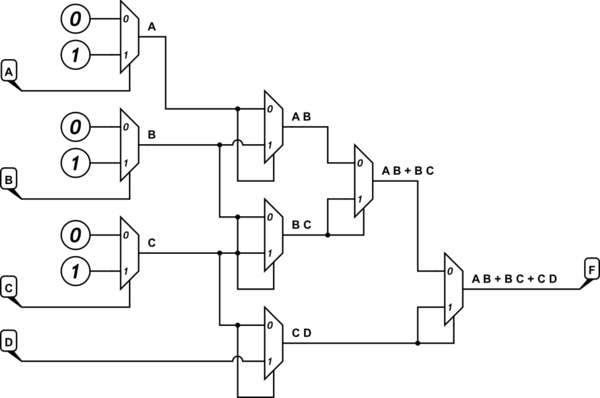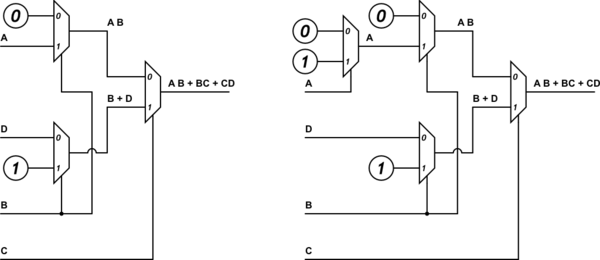I am having difficulties understanding how to implement boolean functions, particularly given that I may only use 2:1 muxes and the variable D as a residual variable.
The function is as follows: $$ F(A, B, C, D, E) = \sum ( 6, 7, 12, 13, 14, 15, 22, 23, 24, 25, 26, 27, 28, 29, 30, 31) $$
I have created the truth table and, using a Karnaugh map, I have minimized the function to this: $$ F(A, B, C, D, E) = AB + BC + CD \bar{E} + CDE $$
I also managed to design a 16:1 MUX with A, B, C and E as selector and D as a residual variable.
I understand how a multiplexer works and I am fully capable of deriving a truth table from an existing implementation but I just simply do not understand how to take the truth table, Karnaugh map and the minimized SOP function and implement the function using only 2:1 MUX and D as a residual variable.
I am not necessarily asking for the straight up answer, although it would be nice to see. I am more interested in an explanation, an algorithm or really anything that can help me come up with the implementation myself.
I want to be able to visualize the connection between the function and the implementation, not just learn how to implement it by heart without understanding why it is the way it is.
Thank you for your time!
Edit: While I understood the accepted answer and it is the correct answer, I was then required to use just the following inputs for the data lines of my 2:1 muxes: logic 0, logic 1 and the variable D. The variables A, B, C should only be used as selector lines.
I created the V-K Map for F(A, B, C, D) = AB + BC + CD and I then used that map to derive a V-K map for F(A, B, C) as can be seen below.
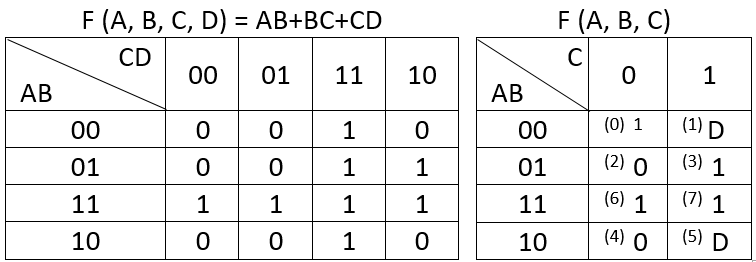 Edit: for the map on the right the value for ABC = 000 should be 0, not 1. A mistake I made when I copied over the table from my notebook into excel.
Edit: for the map on the right the value for ABC = 000 should be 0, not 1. A mistake I made when I copied over the table from my notebook into excel.
Afterwards I created the following mux implementation:
The mux design was taken from an electronics book. The implementation, although not terribly efficient, works. I calculated the output of the muxes using the M(X, Y, Z) = XZ' + YZ formula and the output of the rightmost mux is:
$$ MUX7 = AB\bar{C} + D\bar{B}C + BC $$
Using yet another Karnaugh map, the above simplifies to AB + BC + CD which is the function I needed to implement.
The design of the MUXes itself is borrowed from an electronics book. In the book, the data inputs of the leftmost level of MUXes were numbered as can be seen in my diagram and the labels represent the decimal equivalent of the F(A, B, C) V-K map cells. If you look at, for example, the cell 101 (binary for 5) then the value in that cell is the input for the correspondingly labeled MUX input in the implementation, in this case 'D'.
Can anyone chime in on why are the data input lines labeled in that particular order (0, 4, 2, 6, 1, 5, 3, 7)?

